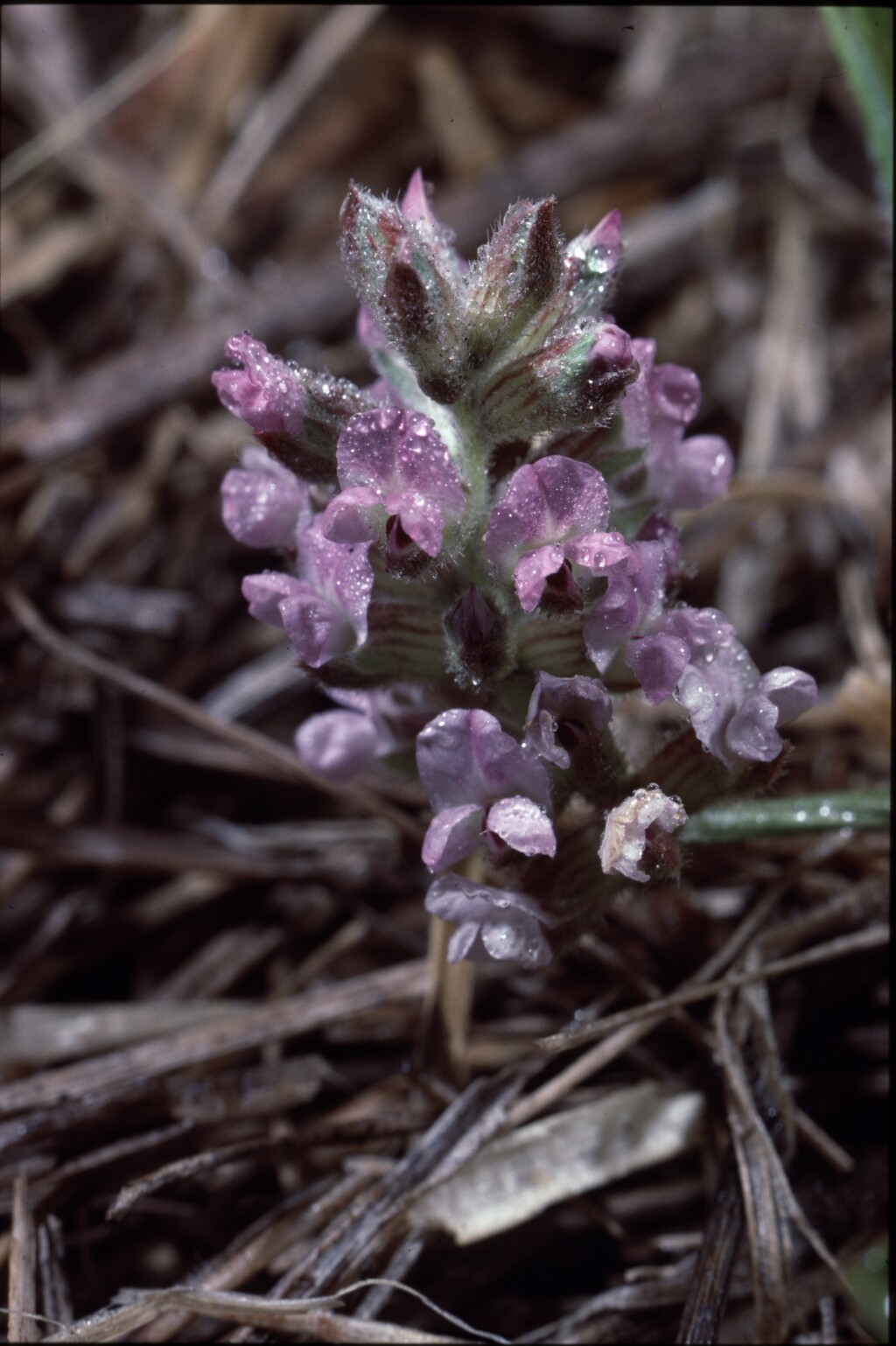Cullen parvum
(F.Muell.) J.W.Grimes Small Scurf-peaTrailing or ascending perennial herb; stems to 50 cm long, glabrous or with sparse hairs. Leaves palmately trifoliolate, to c. 10 cm long; leaflets lanceolate or oblanceolate to oblong, 5–25(–40) mm long, 2–8(–22) mm wide, both surfaces usually sparsely hairy, upper surface dotted with glands, apices acute or obtuse, margins entire; stipules lanceolate to ovate, to c. 4 mm long. Inflorescence rachis 1–3 cm long; peduncles 2–10 cm long, much longer than subtending leaves; flowers mostly in 3s along rachis; pedicels to c. 1 mm long; bract suborbicular, c. 1 mm long, hairy. Calyx ovoid, 4–5 mm long, white-pubescent, teeth subequal, longer or shorter than calyx tube, lower one slightly larger and longer than others; corolla 4–6 mm long, bluish-pink, lilac or white. Pod ovoid, c. 3 mm long, included in calyx, white-pubescent, brownish; seed 1, c. 2 mm long, yellowish. Flowers mainly Oct.–Jan.
Wim, VVP, VRiv, MuF, GipP, OtP, WaP, CVU, HSF. Also SA, (extinct in NSW). Very rare in Victoria where known from a few localities in north-central and south-central areas, and western suburbs of Melbourne, where it grows mainly in grassland or grassy woodland, often on basalt-derived soils.
In addition to the features given in the key, Cullen parvum differs from C. microcephalum in having smaller stipules and a fruiting calyx that more fully encloses the fruit.
Jeanes, J.A. (1996). Fabaceae. In: Walsh, N.G.; Entwisle, T.J., Flora of Victoria Vol. 3, Dicotyledons Winteraceae to Myrtaceae, pp. 663–829. Inkata Press, Melbourne.
 Spinning
Spinning

